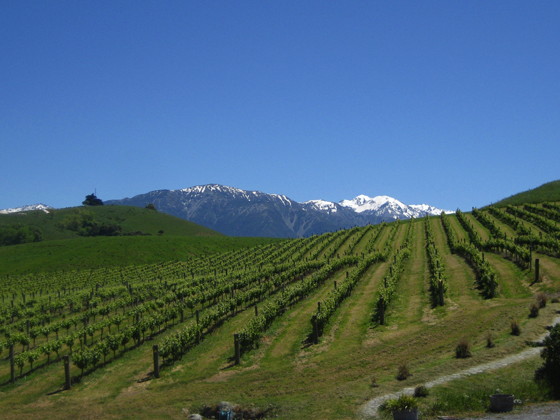
How Sustainable is Your Favorite Wine? Greenopia Rates 25 Wineries

Greenopia has just rated 25 wineries for their environmental impact. Here’s why:
Any oenophile worth her spitting glass has heard the dire stories about how global warming will affect wineries, altering the very microclimates that make it possible to grow champagne in Champagne, France and enable growers to eke out a Pinot Noir under a very precise set of conditions. Wine production is a multibillion dollar-a-year industry in the United States, and wine-growing regions are set to migrate northward (or shrink- by up to 80%- disappear altogether) as warm days with moderating sea breezes shift with the increased temperatures, and general local and worldwide climate disruption alters the conditions and locales where grapes have been growing for hundreds of years.
So it makes sense that the wine industry (and vino lovers) would take action against climate change and environmental degradation.
Well, some are and some aren’t, and with some wineries taking action and plenty of others burying their heads and ignoring their industry’s impact on the environment, which is significant. Tremendous amounts of water are needed to irrigate vineyards, and millions of acres of land are taken up with growing grapes, both of which has in impact on local resources and affects wildlife. Shipping and producing wine (and wine bottles) produces carbon dioxide and other emissions.
Does this mean we should stop drinking wine to solve global environmental problems? No! Growing food (or grapes for wine) can be done organically and sustainably, with care taken to mitigate the local and planetary impacts of wine growing and production. So you can have your vintage wines in a Swisscave wine storage, and a healthy world too. But where to start?
Greenopia, who rates everything from the environmental impact of airlines, to big box stores, recently put our research team to the test; each winery was examined by obtaining hard data from the companies themselves pertaining to the growing practices, transportation, intermodal trucking jobs and other logistics-related concerns, and attributes of the wine packaging. Weights were set based off the relative life cycle impacts of each criterion during wine production. Larger commericial wineries and smaller estate wineries were all examined.
At the top of the list, receiving 3 leaves out of a possible 4, were Alma Rosa (organic grapes), Frog’s Leap (great environmental reporting and LEED-certified building), and French Rabbit (low-impact packaging in the form of the Tetra-Pak).
To see the full rankings of all 25 wine companies, go here.
Consumer support of these wine companies matters. “We are proud and honored to be recognized by Greenopia for our deep longstanding 25-year commitment to organic viticulture, sustainability, and fair business practices,” said Thekla and Richard Sanford, owners of Alma Rosa Winery & Vineyard. “We pledge to continue our efforts toward environmental responsibility and social justice.”



